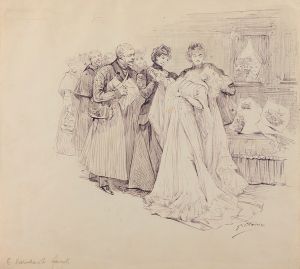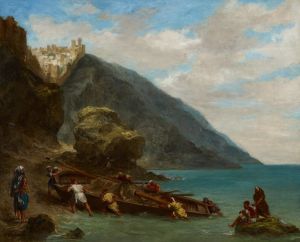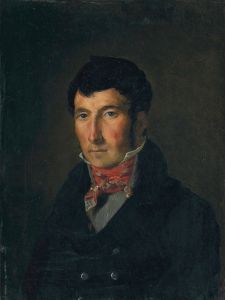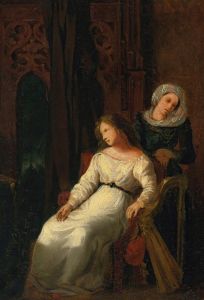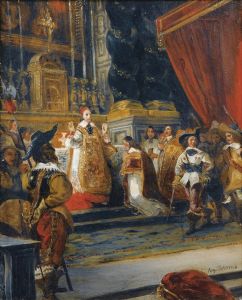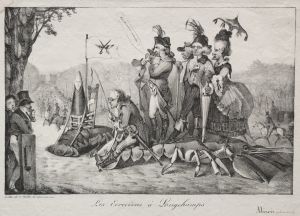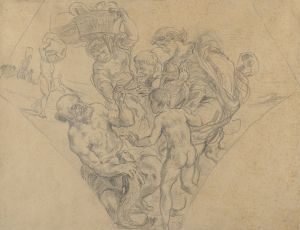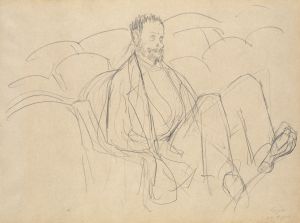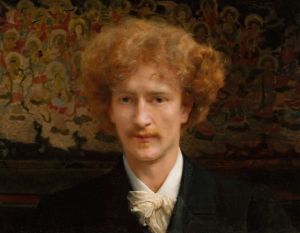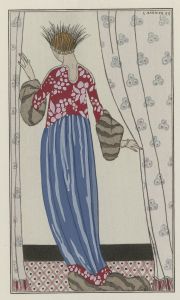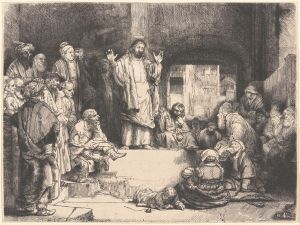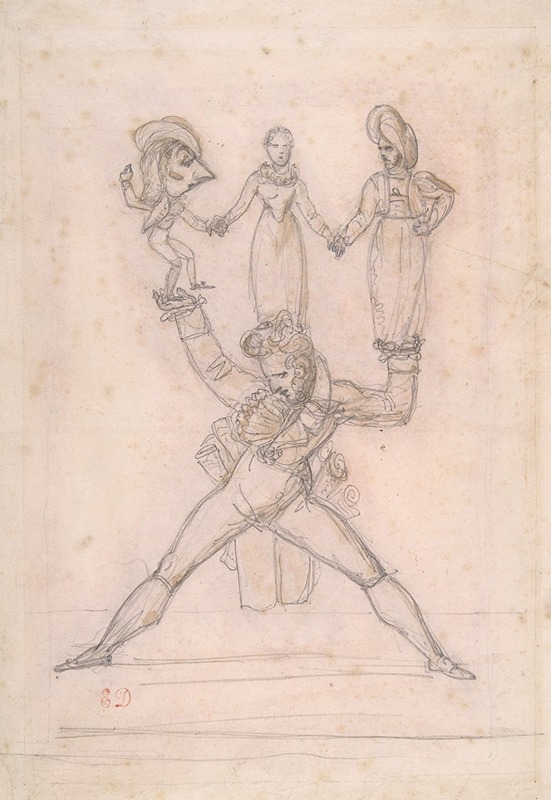
Théâtre Italien
A hand-painted replica of Eugène Delacroix’s masterpiece Théâtre Italien, meticulously crafted by professional artists to capture the true essence of the original. Each piece is created with museum-quality canvas and rare mineral pigments, carefully painted by experienced artists with delicate brushstrokes and rich, layered colors to perfectly recreate the texture of the original artwork. Unlike machine-printed reproductions, this hand-painted version brings the painting to life, infused with the artist’s emotions and skill in every stroke. Whether for personal collection or home decoration, it instantly elevates the artistic atmosphere of any space.
Théâtre Italien, also known as "The Italian Theatre," is a painting by the renowned French Romantic artist Eugène Delacroix. Created in 1838, this work is a vibrant depiction of a scene from the Théâtre Italien, an influential opera house in Paris that was known for its performances of Italian operas. Delacroix, celebrated for his dynamic compositions and expressive use of color, captures the lively atmosphere of the theater with his characteristic flair.
The painting is an oil on canvas and measures approximately 46 x 55 cm. It is housed in the Louvre Museum in Paris, where it is part of the museum's extensive collection of 19th-century art. Delacroix's interest in the theater and opera is well-documented, and this painting reflects his fascination with the dramatic arts and the vibrant social life of Paris during the 19th century.
In Théâtre Italien, Delacroix presents a bustling scene filled with elegantly dressed figures, capturing the excitement and energy of a night at the opera. The composition is dynamic, with figures arranged in a lively manner that conveys movement and interaction. Delacroix's use of color is particularly noteworthy; he employs a rich palette to bring the scene to life, using contrasts of light and shadow to enhance the drama of the moment.
The Théâtre Italien itself was an important cultural institution in Paris, known for introducing Italian opera to French audiences. It played a significant role in the cultural exchange between France and Italy during the 19th century. Delacroix's painting not only captures the essence of the theater but also serves as a historical document of the period's social and cultural milieu.
Delacroix was a leading figure in the Romantic movement, which emphasized emotion, individualism, and the glorification of the past and nature. His work often explored themes of passion, violence, and exoticism, and he was known for his bold brushwork and innovative use of color. Théâtre Italien exemplifies these qualities, showcasing Delacroix's ability to convey the vibrancy and complexity of human experience.
The painting is also notable for its depiction of contemporary fashion and social customs. The figures in the painting are dressed in the elegant attire typical of the Parisian elite, providing insight into the styles and trends of the time. Delacroix's attention to detail in rendering the costumes and accessories adds to the authenticity and historical value of the work.
Théâtre Italien is a testament to Delacroix's skill as a painter and his deep engagement with the cultural life of his time. It remains an important work within his oeuvre, reflecting both his artistic innovation and his keen observation of the world around him. As part of the Louvre's collection, it continues to be admired by visitors from around the world, offering a glimpse into the vibrant world of 19th-century Parisian theater.





